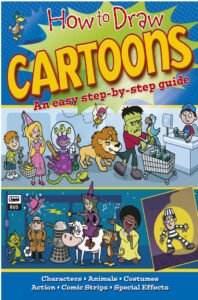NCERT Exemplar Problems Class 7 Science – Nutrition in Plants
Question 1:
Organisms which prepare food for themselves using simple naturally available raw materials are referred to as
(a) heterotrophs
(b) autotrophs
(c) parasites
(d) saprophytes
Answer:
(b) Autotrophs are organisms that make food themselves from simple substances like water, C02 in the presence of sunlight and chlorophyll, e.g. Green plants.
Heterotrophs are organism, which cannot make their own food and take in food prepared by the plants, e.g. Animals and humans.
Parasites are organisms, which live and derive nutrition from another organism, called host, e.g. Cuscuta plant. .
Saprophytes are organism, which obtain nutrition from dead & decaying organic matter, e.g. Fungi, bacteria, etc.
Question 2:
In the absence of which of the following will photosynthesis not occur in leaves?
(a) Guard cells
(b) Chlorophyll
(c) Vacuole
(d) Space between cells
Answer:
(b) Chlorophyll is the green pigment present in leaves of plants that absorbs sunlight energy, to carry out photosynthesis. In the absence of chlorophyll, the leaves would not be able to capture sunlight energy. Therefore, no photosynthesis can occur.
Question 3:
Which of the following statements is/are correct?
(a) All green plants can prepare their own food. ‘
(b) Most animals are autotrophs.
(c) Carbon dioxide is not required for photosynthesis.
(d) Oxygen is liberated during photosynthesis.
Choose the correct answer from the options below:
(a) (i) and (iv)
(b) only (ii)
(c) (ii) and (iii)
(d) (i) and (ii)
Answer:
(a) Statements (i) and (iv) are correct. All green plants are autotrophs. They can make their own food from simple substances like C02 and H20 by the process of photosynthesis. Oxygen gas produced during this process is liberated into the air.
The other statements in correct form are:
Most animals are heterotrophs and C02 is essential for photosynthesis.
Question 4:
Pitcher plant traps insects because it
(a) is a heterotroph
(b) grows in soils which lack in nitrogen
(c) does not have chlorophyll
(d) has a digestive system like human beings
Answer:
(b) Pitcher plant is an insectivorous plant that grow only in soils which do not contain sufficient nitrogen. These plants trap insects by various methods, kill them and digest then to obtain nitrogen compounds for their growth.
Question 5:
The terms that is used for the mode of nutrition in yeast, mushroom and bread mould is
(a) autotrophic
(b) insectivorous
(c) saprophytic
(d) parasitic
Answer:
(c) Saprophytic nutrition is seen in yeast, mushroom and bread mould. In this mode of nutrition, organisms obtain their food from dead and decaying organic matter. Such organisms are known as saprophytes.
Question 6:
When we observe the lower surface of a leaf through a magnifying lens, we see numerous small openings. Which of the following is the term given to such openings?
(a) Stomata
(b) Lamina
(c) Mid rib
(d) Veins
Answer:
(a) Stomata are the numerous small openings observed on the lower surface of a leaf.
Each of these pore is surrounded by a pair of guard cells. The stomata helps in the exchange of gases (C02 goes in and 02 is released out).
Question 7:
Two organisms are good friends and live together. One provides shelter, water and nutrients while the other prepares and provides food. Such an association of organisms is termed as
(a) saprophyte
(b) parasite
(c) autotroph
(d) symbiosis
Answer:
(d) Symbiosis is an association between two different organisms that live together and help each other to survive, e.g. Licher (association between an alga and fungus).
Question 8:
Which of the following raw material is available in the air for photosynthesis?
(a) Oxygen
(b) Carbon dioxide
(c) Nitrogen
(d) Hydrogen
Answer:
(b) Carbon dioxide is the raw material of photosynthesis that is available in air. It is taken by the plant through the tiny pores, called stomata, present on the surface of leaves.
The other necessary conditions are the presence of water, chlorophyll and sunlight. (Oxygen is released during the process hydrogen comes from water and nitrogen has no role in photosynthesis.
Very Short Answer Type Questions
Question 9:
Potato and ginger are both underground parts that store food. Where is the food prepared in these plants?
Answer:
In both the plants, shoot system and leaves are above ground. They prepare food through photosynthesis and transport it to the underground parts for storage.
Question 10:
Photosynthesis requires chlorophyll and a few other raw materials. Add the missing raw materials to the list given below:
Water, minerals, (a)…………. (b)……..
Answer:
(a) Sunlight
(b) Carbon dioxide
Photosynthesis is a process by which green plants make their own food, from C02 and H20 by using sunlight, in the presence of chlorophyll.
Short Answer Type Questions
Question 11:
A goat eats away all the leaves of a small plant (balsam). However, in a few days, new leaves could be seen sprouting in the plant again. How did the plant survive without leaves?
Answer:
The plant of balsam survived on the food stored in the stem and roots. It might have undergone gaseous exchange through lenticels on stem.
Question 12:
Unscramble the following to form terms related to modes of nutrition,
(a) RASPAEIT
(b) ROPEHYTSAP
(c) TOROPHAUT
(d) SIBIOMSYS
Answer:
(a) PARASITE
(b) SAPROPHYTE
(c) AUTOTROPH
(d) SYMBIOSIS
Question 13:
Nitrogen is an essential nutrient for plant growth. But farmers who cultivate pulses as crops like green gram, bengal gram, black gram, etc. do not apply nitrogenous fertilisers during cultivation. Why?
Answer:
The plants such as gram, peas, pulses are called Leguminous plants (legumes). These plants have root nodules in them which have a symbiotic association with bacteria such as Rhizobium. This bacteria convert gaseous nitrogen of air into water soluble nitrogen compounds (like nitrates).
Some of these nitrogen compounds are used by the leguminous plants for their growth. Hence, farmers do not need to apply nitrogenous fertilisers in the fields during cultivation.
Question 14:
Wheat dough if left in the open, after a few days, starts to emit a foul smell and becomes unfit for use. Give reason.
Answer:
Carbohydrates in wheat dough encourage the growth of yeast and other saprophytic fungi. They breakdown carbohydrates into simpler compounds like C02 and alcohol that leads to afoul smell.
Question 15:
Sunlight, chlorophyll, carbon dioxide, water and minerals are raw materials essential for photosynthesis.
Do you know where they are available? Fill in the blanks with the appropriate raw materials. .
(a) Available in the plant:………
(b) Available in the soil:………..
(c)Available in the air:…………
(d) Available during day :………
Answer:
(a) Available in the plant : chlorophyll (Green pigment present in leaves that absorbs energy from sunlight).
(b) Available in the soil: water and minerals (These are absorbed by the roots from the soil and are transported to leaves through xylem).
(c) Available in the air: carbon dioxide (Enters through the tiny pores called stomata on the surface of leaves).
(d) Available during day : sunlight (It is captured by chlorophyll in leaves and is converted into chemical energy).
Question 16:
Observe the given figure and label the following terms given in the box. Stomatal opening,

Answer:

Question 17:
Match the organisms given in column I with their mode of nutrition given in column II.

Answer:
The correct matching is as given:
(a)-(iii), (b)-(iv), (c)-(i), (d)-(v), (e)-(ii).
(a) Mango tree prepares its own food, has green leaves—Autotroph.
(b) Mushroom grows on dead and decaying organic matter and obtain their nutrition from them. So, they are saprophytes.
(c) Pitcher plant has modified leaves that trap insect to obtain nitrogen compounds. Thus, it is an insectivorous plant.
(d) Cuscuta does not have chlorophyll. It takes food from the tree on which it climbs, depriving the host tree of nutrients. Therefore, it is parasitic.
Elephant cannot make its own food. So, its a heterotroph.
Question 18:
Wild animals like tiger, wolf, lion and leopard do not eat plants. Does this mean that they can survive without plants? Can you provide a suitable explanation?
Answer:
Animals like tiger, wolf, lion and leopard are carnivorous and do not eat plants. They hunt and eat herbivorous animals like deer, gaur, bison, zebra, giraffe, etc., which are dependent on plants for food.
If there are no plants, herbivorous animals will not be able to survive as they will have no food and would die of starvation. This will ultimately affect animals like tiger, wolf, lion and leopard that depend on herbivorous animals for food.
They will have nothing to eat and thus would not survive from this, it can be concluded that all heterotrophs directly or indirectly depend on plants for food and cannot survive without plants.
Question 19:
Fill in the blanks of the paragraph given below with the words provided in box. chlorophyll, energy, food, carbon dioxide, water, photosynthesis
Leaves have a green pigment called …(a)… which captures …(b)… from sunlight. This …(c)… is used in the process of …(d)… and along with other raw materials like …(e)… and …(f)… to synthesise …(g)… .
Answer:
(a) chlorophyll
(b) energy
(c) energy
(d) photosynthesis
(e) carbon dioxide
(f) water
(g) food
Question 20:
Spot as many organisms as possible in the puzzle given as figure by encircling them as shown. Write the names on a sheet of paper and categorise them into autotrophs and heterotrophs. Classify the heterotrophs into herbivores, carnivores, omnivores and saprophytes

Answer:

Question 21:
Can you give me a name?
Solve each of the following riddles by writing the name of the organism and its mode of nutrition. One riddle is solved to help you.
(a) I am tall but I cannot move. I am green and can prepare my own food. tree, autotroph.
(b) I live in water; people keep me in an aquarium and feed me.____ ,____
(c) I am small and I can fly, I disturb your sleep, bite you and suck your blood which is my food.____ ,____
(d) I am white and soft. I grow well in the rainy season. Children pluck me from the ground and admire me. I absorb nutrients from decomposed dead parts of plants and animals in the soil.
Answer:
(b) Fish, heterotroph
Fish is an aquatic animal. It is kept in aquarium by people. It cannot make its own food. So, its heterotroph.
(c) Mosquito, omnivore
A mosquito during its life cycle passes through different modes of nutrition. The larvae feeds on microorganisms, the adult female feeds on blood to supply proteins for eggs and adults of both sexes feed on plant nectar. So. it is most appropriate to consider them as an omnivore.
(d) Mushroom, saprophyte
Fungi such as mushroom under warm conditions grow on dead parts of plants (e.g. rotting wood of a dead tree) and animals. They obtain nutrition from decaying organic matter. So, they are saprophytes.

